‘A place that inverts time’: Exploring the striking artisans of Mexico
The lesser-travelled craft trail of Michoacan is a colourful treasure trove of heritage and tradition, finds Ben Guarino
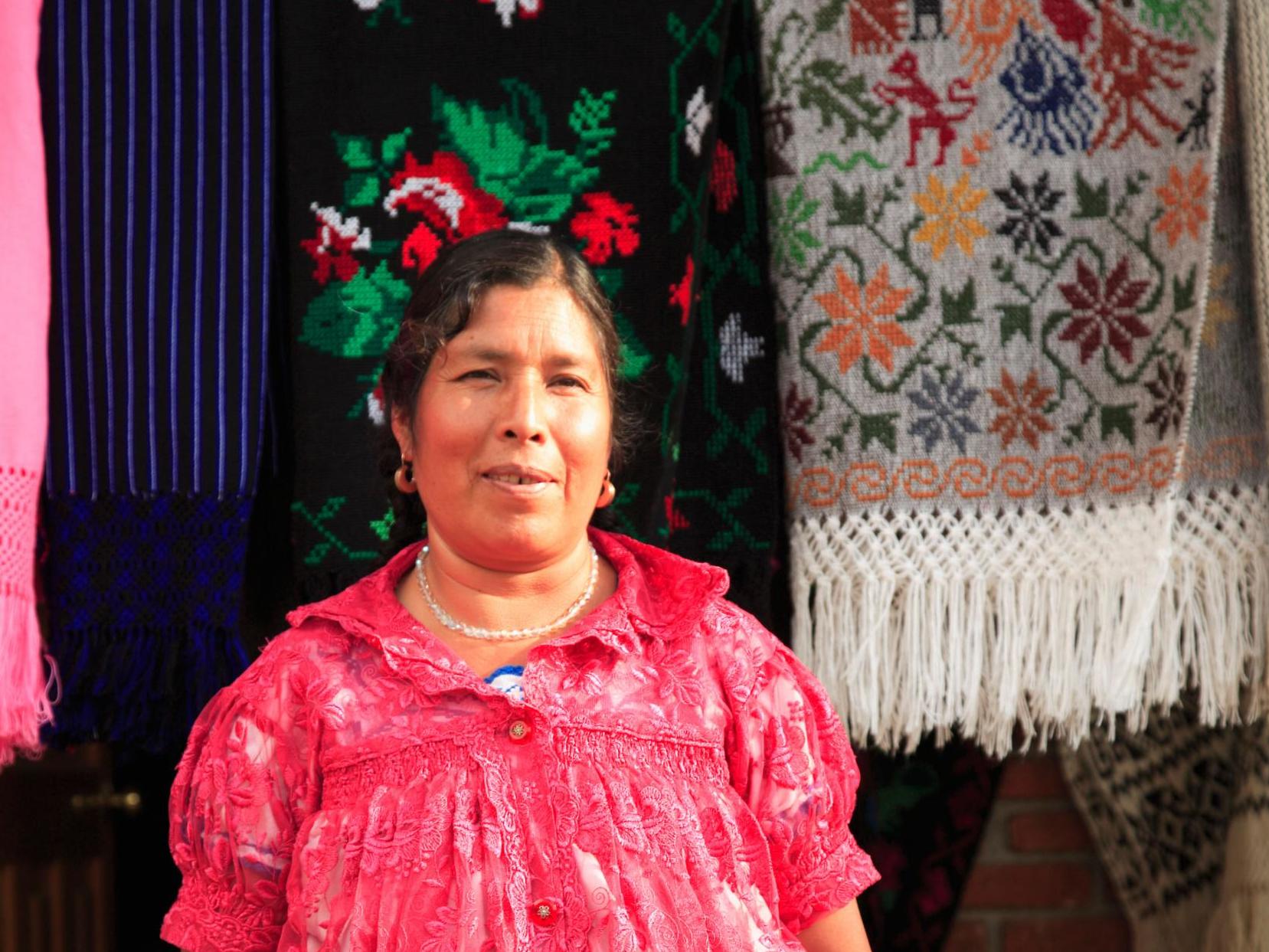
Your support helps us to tell the story
From reproductive rights to climate change to Big Tech, The Independent is on the ground when the story is developing. Whether it's investigating the financials of Elon Musk's pro-Trump PAC or producing our latest documentary, 'The A Word', which shines a light on the American women fighting for reproductive rights, we know how important it is to parse out the facts from the messaging.
At such a critical moment in US history, we need reporters on the ground. Your donation allows us to keep sending journalists to speak to both sides of the story.
The Independent is trusted by Americans across the entire political spectrum. And unlike many other quality news outlets, we choose not to lock Americans out of our reporting and analysis with paywalls. We believe quality journalism should be available to everyone, paid for by those who can afford it.
Your support makes all the difference.Clambering down into the half-buried ruins of San Juan Parangaricutiro, past stone archways subsumed in lava less than 80 years ago, I glance up over jagged spires of black basalt to the ash cone of Paricutin, one of the world’s youngest volcanoes, hovering like a spectre on the horizon.
I’d seen views like this one before, rendered in expressionist shades of cobalt and eggplant gashed with dazzling flares of orange by the painter known as Dr Atl. Starting in 1943, when the volcano emerged from a cornfield here in the western Mexican state of Michoacan, Atl, along with dozens of artists and scientists from around the world, spent years recording this geological miracle.
Yet none of his paintings had prepared me for the hallucinatory strangeness of the real thing: a place that inverts geological time, where the ground underfoot is younger than the orphaned church spires rising above it, where a mountain – an immovable part of any ordinary landscape – is only a few decades old.
Paricutin, it occurs to me while contemplating the church’s miraculously preserved, fern-garlanded altar, makes a fine metaphor for the surrounding region of the Tarascan Plateau (known in Spanish as the Meseta Purhepecha), an area known for its fiercely protected indigenous communities and the unparalleled craft traditions that thrive within them.
While urban Mexicans and foreigners often treat those traditions as static relics, in the region, they’re dynamic and ever-changing, producing new icons with the same spontaneous creative energy that forced Paricutin up through the Earth’s crust.
I’d been planning on visiting Paricutin since I moved to Mexico in 2016, but had been hesitant to make the trip. Closely associated with the United States-backed drug war that has ravaged Mexico’s countryside since 2006, Michoacan is not the easiest place to visit. Particularly in the Meseta, tourism infrastructure is limited, and violent flare-ups spurred by the $2.4bn (£1.9bn) avocado trade are not uncommon, particularly in the periphery of Uruapan, Michoacan’s second-largest city and the main urban hub for the Meseta.

But friends in Uruapan urged me to come. By and large, tourists are not the targets of the crime that the local communities face. With basic precautions (namely not to travel by road after dark) I could move freely, they say.
The last few years have also seen several new projects – a cultural centre, an exciting new restaurant – that, in their own modest way, had begun to redefine Uruapan, an industrial town of about 330,000 people. In the surrounding countryside, dotted with craft villages less well known than their counterparts near Lake Patzcuaro to the east, perceptions of insecurity has taken a toll on artisans too, who rely on tourism for an important part of their modest annual incomes.
On the road to Uruapan
On a cool August morning I drive west out of Mexico City, stopping in Michoacan’s grand pink sandstone capital of Morelia, at the powerful ruins in Tzintzuntzan, and in the graceful lakeside town Patzcuaro, arriving in Uruapan a few days later.
Unlike Morelia and Patzcuaro, colonial showstoppers both, Uruapan’s pleasures are humble: evenings spent people-watching on the broad central plaza; snacking on sweet corn tamales, called uchepos, at the Mercado de Antojitos, or snack market; and sipping dark, fragrant coffee at Cafe Tradicional, a dim, wood-panelled coffee house with atmosphere as dense as cigar smoke.
It is here that I meet historian and teacher Arturo Avila on my first evening in town. “Uruapan, throughout the centuries, has always been a crossroads,” he tells me.
When we dream, we carry these images in our heads, then we realise them in clay. I can take the things I see and imprint them on the material with my hands
An indigenous town before the arrival of the Spanish, the modern city of Uruapan was established by Franciscan monks in 1533 and declared a settlement for indigenous peoples in 1540. A communal garden and public hospice formed the centre of the town, where weavers would come to trade cotton shawls for clay bowls thrown in ceramics towns farther north or woven mats from the lakeshore.
The products we think of as artesania, or craft, Avila tells me, were initially developed out of necessity, using available materials and binding communities through mutual reliance. More than art objects, they were known, Avila says, as “the skill and destiny” of each town, a division of labour consolidated under colonial rule.
Uruapan’s “skill and destiny” is mercantile, first as a centre of trade for surrounding artisans who flocked to the town in particularly large numbers during Holy Week. Vestiges of that tradition remain during the city’s Easter celebrations, when artisans from across the state sell their wares in the central plaza and under the squat stone arches of the old hospice, now the Huatapera Indigenous Museum.
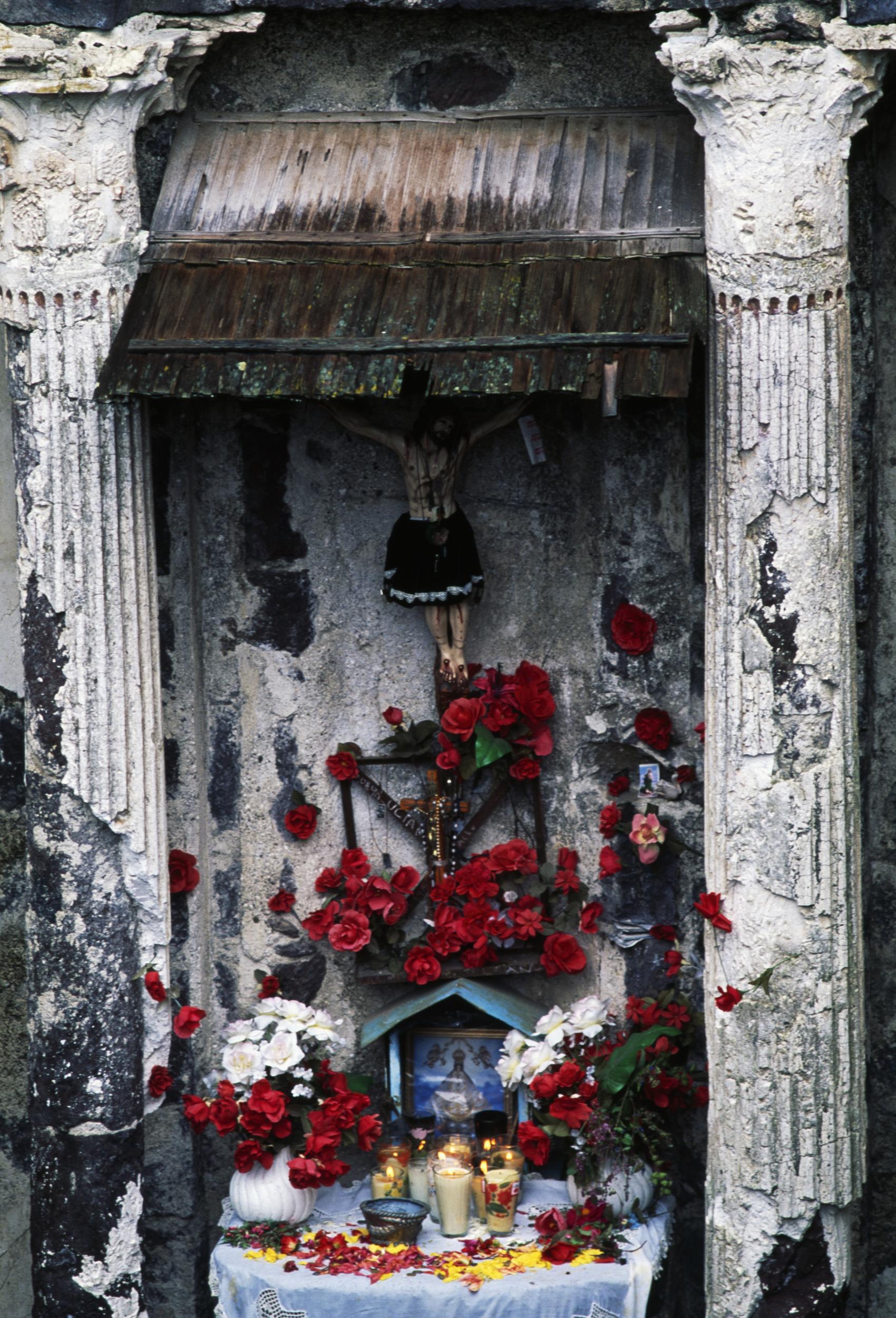
On Palm Sunday, easily the best day of the year to visit, Uruapan puts on the finest of Michoacan’s more than 20 craft competitions, gathering all the state’s most accomplished artisans in one place.
The morning after meeting Avila, I take a short taxi ride to the hilltop Hotel Mansion Cupatitzio, a throwback to 1960s hacienda-style glamour, where I sip a coffee in the flower-draped gardens, then wander into the Cupatitzio Canyon National Park, one of Mexico’s most beautiful urban parks, established in 1938.
I spend the better part of an hour wandering down stone paths damp with mist kicked up from waterfalls. I follow the river as it pours itself into iridescent blue plunge basins, rushing under arching bridges and slipping over geometric fountains designed in the pre-Columbian revival style.
Where the park ends, the river emerges into a sudden shock of light bouncing off the high stone walls of the San Pedro textile factory – the other reason I’d decided to visit Uruapan. For the first half of the 20th century, the Fabrica San Pedro, powered by the Cupatitzio River, had been one of the city’s largest employers. In 2016, the factory, in decline for decades since the Second World War, reopened as a cultural centre operated by the foundation of Mexico City-based artist Javier Marin (he was born in Uruapan) and the Illsley family, who bought the factory in 1995 to save it from developers.
Walter and Bundy Illsley first moved to Mexico in the Fifties. Over decades in Michoacan, Walter introduced irrigation systems in small towns and was among the founders of the Faculty of Agro-Biology at Michoacan’s state university. Together, he and Bundy founded a boutique textile company, Telares Uruapan, and collaborated over the years with luminaries of American modernism like Alexander Girard and Francine Knoll on custom designs.
Though the Fabrica no longer operates at an industrial scale, it still produces textiles through the looms of Telares Uruapan, now run by Walter and Bundy’s children, Susana and her brother Rewi Illsley, out of the factory’s former storage spaces.
On the day I visit, Bundy, along with Rewi and Rewi’s daughter Clara, show me through the Fabrica’s vast central gallery – high and narrow and suffused with tropical warmth – then down into the basement, among rows of obsolete machinery lined up under bending rays of dusty light: a museum to a dead industry. Upstairs, we visit the Fabrica’s small shop, selling a rainbow of napkins and tablecloths made on the Illsley handlooms, and garments by Japanese designer Minori Kobayashi, who came to Uruapan in the 1970s and never left.
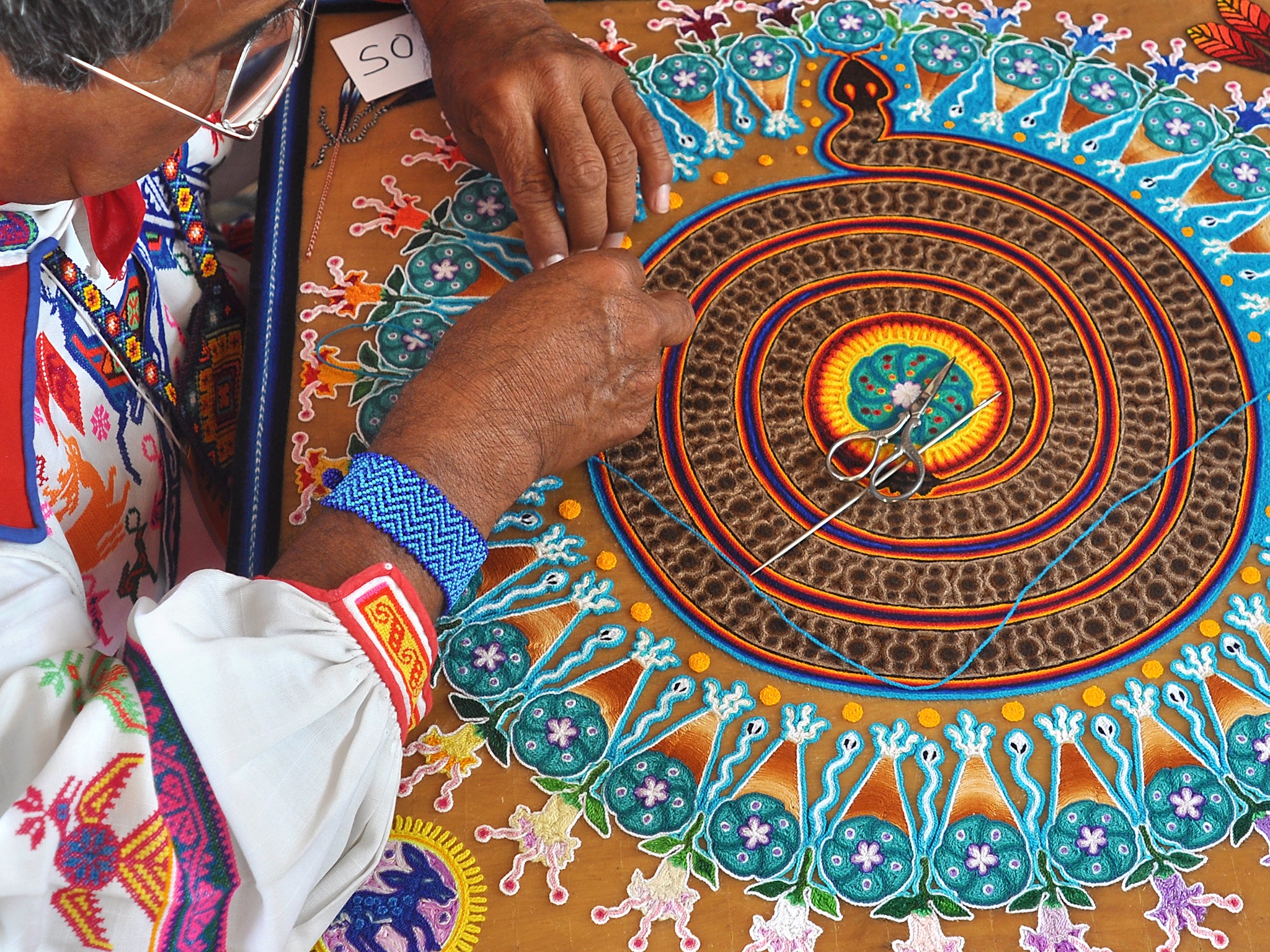
We flip through the swatches of fabrics that Bundy had developed and produced for Knoll and Herman Miller. “Design,” Bundy says, “has always been part of our world.”
For dinner that night, I go, at the Illsleys’ recommendation, to Cocina M, where chef Mariana Valencia turns out surprising dishes like crisp petals of cecina (dried beef) to dip in a blazing sauce of Manzano chilies and dashi, and a decadent avocado mousse tempered with a bracing yuzu sorbet. Valencia, who grew up in Uruapan in a family of Lebanese origin, opened the restaurant with her Colombian husband, Marino Collazos, in April 2016, after several years working in restaurants in Miami, where the couple met.
Like the whole world, Michoacan needs love and care and connection, which is what we’re trying to do here
Since then, they have travelled extensively around Michoacan to learn its regional ingredients and indigenous cooking techniques, still relatively unknown outside the communities that practice them. “In the process, we’ve really fallen in love with this place and its traditions,” Valencia tells me. “Like the whole world, Michoacan needs love and care and connection, which is what we’re trying to do here.”
Before dinner, Collazos shows me around, pointing out the provenance of each object in the restaurant and, in many cases, the artisan who’d made it: the green wall planted with species endemic to the Cupatitzio River; copper wine pails from Santa Clara del Cobre; the installation of glazed green pineapples from San Jose de Gracia; and the Virgin of Guadalupe from Ocumicho, installed after a customer complained that they’d inadvertently tainted the space with inauspicious numbers.
To the craft villages
The next morning, armed with a list of craft villages and names of artisans gathered over the previous days, I drive north out of the city and into the high open country of the Meseta. Roughly 40 minutes from Uruapan, I wind through the pretty historical centre of Paracho, a town known for its handmade guitars and vibrant Sunday market, to the sleepy village of Ahuiran.
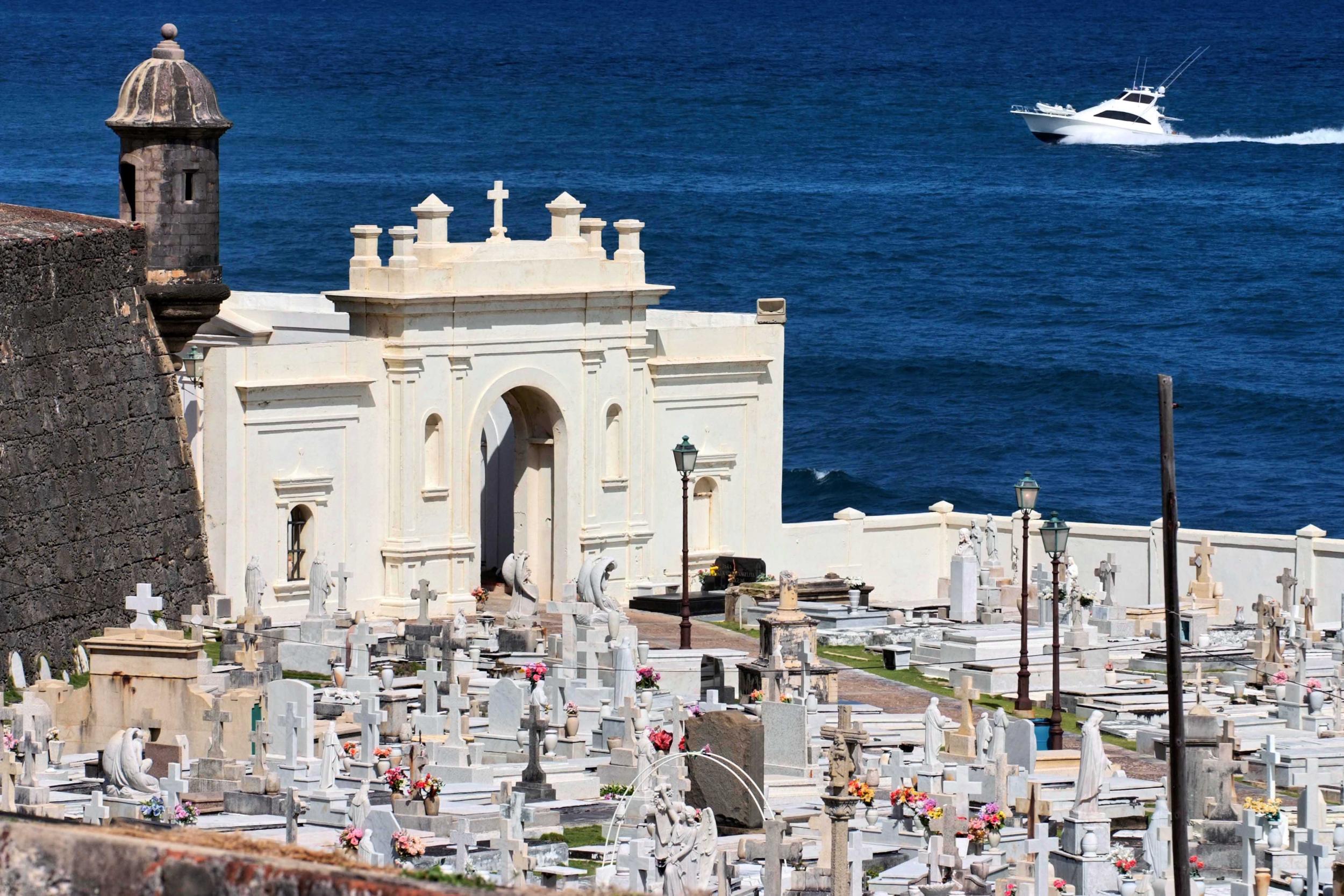
In a modest house down a concrete-paved side street, I meet Rosa Liliana Bautista, whose grandmother, she says, had been the first artisan to stitch feathers into the hems of her shawls, the style for which the village is now famous. Though Bautista herself spent five years living in the United States, continuing to weave with materials shipped north by her mother, it wasn’t until returning home in 2014 that she found a market for her work – largely among other Michoacan immigrants in the US.
Barely 10 minutes away by road, in the village of Aranza, at the hem of forested mountain slopes, Genoveva Zacari shows me blue, black and yellow cotton as delicate as lace that she and her sisters had learned to weave under their mother’s tutelage. “The imagination, the skill, even the love you feel for the work will affect the pattern. Like this one, for instance, was made by my sister, and I can tell that she wasn’t in a good mood when she made it,” Zacari tells me.
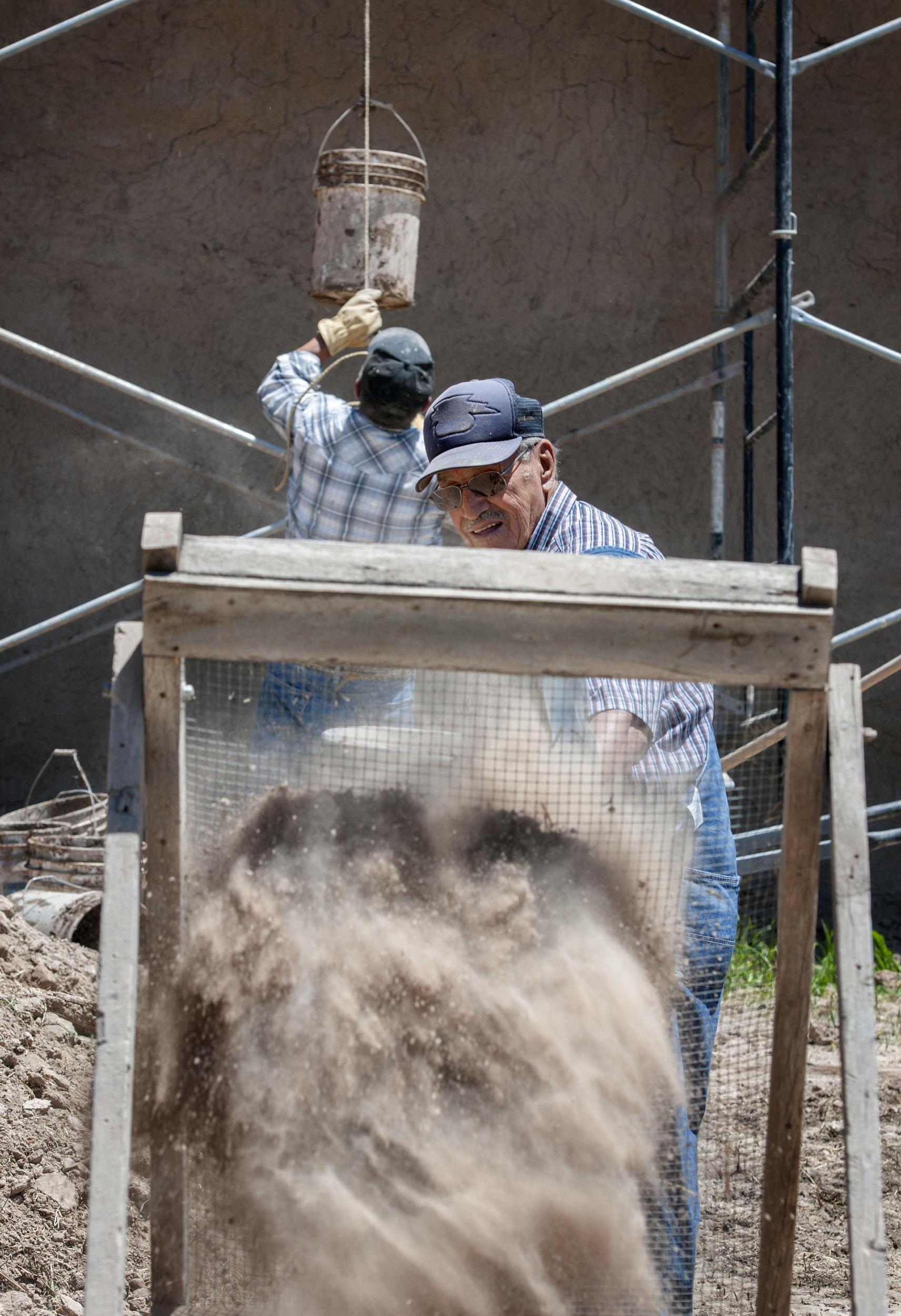
From the textile villages, I went west to Angahuan, the jumping-off point for full-day hikes to Paricutin’s otherworldly crater, spending the night at the Spartan, community-run Centro Turistico Angahuan. Two mornings later, after a day hike to Paricutin’s summit through the ruins of San Juan Parangaricutiro, its lava-choked chapel the only surviving remnant of the village, I drive north to the ceramics towns near the border with Jalisco.
In Patambam I stop in the workshop of the Ayungua family, which locals in this pretty, terra cotta roofed village call “the museum”. Here, three generations of potters decorate unglazed red clay pottery with paints made from white clay, a recent deviation from the traditions of burnished red and green-glazed pottery practised by most families here, according to the craft expert Rick Hall, who runs an annual guided tour through the Meseta during Holy Week via his Patzcuaro-based gallery, Zócalo Folk Art.
A short drive away in San Jose de Gracia, the dusty main road is lined with ceramic pineapples glazed in glossy shades of pink and yellow and green. In one of the village’s many modest home workshops, the Gutierrez family tell me about their own emblematic craft’s gradual evolution through the middle of the 20th century, as artisans from the Madrigal family added decorative elements to what had once been simple glazed jugs and casseroles.
A potter called Marcelino Vicente Mulato had a vision of the devil that he translated into clay
Today, meter-high pineapples from San Jose appear in the permanent collection at Mexico City’s Museum of Popular Art and regularly take top prizes at nationwide craft competitions.
Just a few minutes down the road from San Jose, in the village of Ocumicho, I visited the home studio of Tomasa Gonzalez Sanchez, populated with hundreds of winsome clay figurines painted in psychedelic acrylics: whistles shaped like peacocks, devils cavorting on a bridge that Gonzalez had seen once years before on a trip to Mexico City, and a miniature Last Supper of mermaids eating watermelon.
Until the 1960s, Gonzalez tells me, no one in town made figurines like these. Then a potter called Marcelino Vicente Mulato had a vision of the devil that he translated into clay: another spontaneous reinvention of the cultural landscape.

“When we dream, we carry these images in our heads, then we realise them in clay,” Gonzalez says. “I can take the things I see and imprint them on the material with my hands.”
If you go
The charming rooms at the Hotel Mansion de Cupatitzio are a perfect jumping-off point for walks into the Barrancas de Cupatitzio National Park and start at 1,700 Mexican pesos (£55) during the high season around Holy Week.
Just a few blocks from Uruapan’s central square, the Hotel Mi Solar occupies a late-19th-century mansion that was remodelled as a hotel in 1943 (standard rooms from 1,232 Mexican pesos (£42) during Holy Week).
Cocina M offers the most interesting food in town. A dinner for two, including starters, mains and a glass of wine, should run about 1,100 (£35) Mexican pesos.
Another local favourite, famous for serving traditional cooking from the Tierra Caliente region of the state, is Rincon de Aguililla, where a filling meal for two will cost roughly 350 Mexican pesos (£11).
The best option for visits to Paricutin is an overnight stay at the community-run Centro Turistico Angahuan, where a simple cabin with a working fireplace starts at 500 Mexican pesos (£16). Guides often wait at the entrance to the hotel and the staff can help plan excursions, which usually start at 1,200 Mexican pesos (£39) for two people.
Most of the artisan towns have many families dedicated to craft but little infrastructure to help find their studios. A good starting point is the Casa de las Artesanias in Morelia, where the knowledgeable staff can help guide you. The owners at some of the more established galleries in Patzcuaro, like the Zocalo Art Gallery, are even greater fonts of knowledge about the region.
Once in the craft villages, you can ask for the artisans you want to visit by name. As you leave one workshop, it’s always worth asking for that artisan’s recommendations for studios. Otherwise, just stop in the central plazas of a village to ask for artesania; this will almost always bring you to someone’s home studio.
Prices can vary dramatically. Small, simple pineapples in San Jose de Gracia may cost no more than a few dollars, while more elaborately worked objects can easily run hundreds of dollars, if not more. Bartering is frowned upon, unless you’re in a large market and buying in bulk. Keep in mind that whatever you’re being asked to pay is almost certainly a modest price for the amount of work involved.
© The New York Times
Join our commenting forum
Join thought-provoking conversations, follow other Independent readers and see their replies
Comments